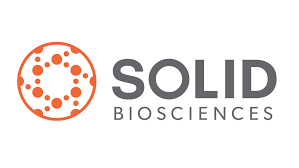> Click on the stage for detailed information.
Heart failure is a constellation of signs and symptoms that can be caused by DCM. There are many disease conditions that can cause dilated cardiomyopathy (DCM) and other types of cardiomyopathy. Symptom severity of heart failure is classified and categorized by the New York Heart Association classification I, II, III, IV, which refer to symptoms of heart failure. Symptoms of heart failure due to dilated cardiomyopathy can improve, or they can worsen, so one can move back and forth across the classes. This classification does not necessarily correspond to the types of changes the heart has undergone or is undergoing.
The stages of heart failure describe changes to the heart structure. There are four stages of heart failure, named A, B, C and D.
Heart Failure Stage A
Pre-heart failure, which means that you are at high risk of developing heart failure
Heart Failure Stage B
Structural changes to the heart have occurred, but no symptoms of heart failure have yet developed
Heart Failure Stage C
Symptoms of heart failure have now occurred with changes to the heart structure
Heart Failure Stage D
Characterized by structural changes to the heart and refractory heart failure symptoms that occur at rest despite optimal therapies
Heart Failure Stage A
What is Stage A heart failure?
Stage A is pre-heart failure, which means that you are at high risk for developing heart failure if you have one or more of the following conditions:
- Family history of cardiomyopathy or known to have a genetic mutation that can cause DCM
- Hypertension (high blood pressure)
- Diabetes
- Coronary artery disease
- Metabolic syndrome
- History of alcohol abuse
- History of rheumatic fever
- History of taking drugs that can damage the heart muscle
(e.g., chemotherapy, methamphetamines)
There are no changes to the heart structure.
What is the therapy for Stage A?
The primary goal for Stage A is to reduce your risk of developing heart failure and changes to heart structure. This means that if you have high blood pressure, then it needs to be well treated and controlled. If you have diabetes, you need to control it. If you smoke, you should stop smoking. If you have high cholesterol, it should be well treated. If you abuse alcohol or take drugs that can damage your heart muscle, you need to stop their use. If you need help to stop, you should seek help. Regular exercise is also important, as well as controlling your weight.
Specific classes of drugs such as ACE-inhibitors, ARBs, and beta blockers to treat high blood pressure, coronary artery disease, and diabetes may further reduce risk.
Heart Failure Stage B
What is Stage B heart failure?
The hallmark of Stage B is that structural changes to the heart have occurred, but symptoms of heart failure have not yet developed.
Examples of structural changes include damage to the heart muscle as a result of a heart attack or genetic abnormalities. These structural changes include reduced heart muscle contraction (systolic dysfunction), abnormalities to the heart valves, and enlargement of the heart.
What is the treatment for Stage B?
The treatments for Stage B heart failure includes all the treatments for Stage A and, for patients with reduced heart muscle contraction, the use of important classes of drugs such as ACE-inhibitors, ARBs, and specific beta blockers. Some of these patients may also be appropriate candidates for implantable cardioverter-defibrillators (ICDs).
Heart Failure Stage C
What is Stage C heart failure?
The hallmark of Stage C is that symptoms of heart failure have now occurred with changes to the heart structure. Symptoms include fatigue, shortness of breath, and decreased exercise tolerance (refer to symptoms of heart failure), systolic dysfunction (reduced heart pumping function), abnormalities to the heart valves, and enlargement of the heart.
What is the treatment for Stage C?
The treatments for Stage C heart failure include those for Stage A and Stage B,
plus additional classes of medications and devices (biventricular pacemakers) for appropriate patients. Specific surgeries such as coronary artery bypass and valve surgeries or procedures in appropriate patients are additional treatments.
Heart Failure Stage D
What is Stage D heart failure?
Stage D is characterized by structural changes to the heart and refractory heart failure symptoms that occur at rest, despite optimal therapies.
What is the treatment for Stage D?
The treatments for Stage D heart failure include those for Stage A, Stage B and Stage C, in addition to specialized interventions for appropriate patients. These specialized treatments include intravenous inotropic drugs, mechanical cardiac support (mechanical pumps that can be implanted), and heart transplant. Some patients may not be candidates for such therapies. In such cases, palliative or hospice care may be more appropriate.
Additional Resources: Download a Heart Failure Patient Guide HERE.
Click to Explore:









